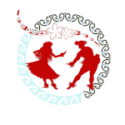In Tahitian dance (‘Ori Tahiti), Ope refers to a dynamic movement or step that involves a lateral shift of the body, often with a focus on the arms, torso, and hips. It is an important element in several styles of Tahitian dance and is commonly used to transition between movements or create fluidity and rhythm in a performance. The term Ope is derived from the Tahitian language, which generally conveys the idea of an open or outward movement, as well as the concept of spreading or expanding.
Understanding Ope in Tahitian Dance
- Translation:
- Ope typically means “to open,” “to spread,” or “to move outward,” and it often involves an expansive or flowing motion, especially with the arms, torso, and hips.
- This motion is not only lateral but also encompasses the idea of broadening one’s movement or reaching outward, similar to the gesture of extending one’s arms or opening the body.
Technique of Ope
- Movement Characteristics:
- The basic Ope involves the dancer shifting the body from side to side, often using the legs to support a smooth, lateral movement. The feet are typically positioned apart, allowing the dancer to flow between different sides with ease.
- The arms play a significant role in Ope, as they often extend or move outward, creating a visual expansion or “opening” of the body. The arms may sweep across the body in fluid arcs, tracing the direction of the lateral body movement.
- The torso and hips are integrated into the movement, often performing a rhythmic sway or circular motion (fa’ahe’e or tā’iri tāmau) to complement the lateral shifts and arm movements.
- The arms and torso might also rotate in coordination with the lateral shift, creating a visually pleasing flow as the dancer transitions across the stage.
Role in Tahitian Dance
- Fluidity and Transition:
- Ope is often used to connect different movements and sections of a dance, providing fluidity and a seamless transition between steps. It allows the dancer to shift gracefully from one position to another while maintaining the rhythm and flow of the performance.
- Creating Visual Expansion:
- The lateral and outward movement of Ope gives the impression of opening or expanding, both physically and metaphorically. This motion enhances the visual dynamic of the performance, making it more expansive and expressive.
- Symbolizing Connection and Flow:
- In some cases, Ope can symbolize connection—between the dancer and the audience or between different elements of the performance. The motion can evoke the imagery of waves, flowing winds, or the expansive nature of the ocean and sky, which are integral to Polynesian culture.
- Rhythmic Movement:
- Ope is typically performed with rhythmic precision, with the dancer coordinating their steps, arm movements, and hip motions to match the beats and melody of the accompanying music.
Training and Mastery
- Body Coordination:
- Mastery of Ope requires excellent coordination between the arms, torso, and hips. The dancer needs to move laterally while maintaining fluidity in their arm gestures and hip movements, which requires both strength and flexibility.
- Posture and Balance:
- Maintaining good posture and balance during Ope is essential, as the dancer is often shifting their weight from one side to the other. Proper alignment helps maintain the smoothness of the movement while avoiding any jerky motions.
- Flexibility and Fluidity:
- The dancer’s ability to extend the arms and create a sweeping, fluid motion is crucial for performing Ope effectively. This requires good upper body flexibility and a relaxed, flowing quality to the movements.
Symbolism and Connection
- Natural Elements:
- Ope can symbolize the natural forces of wind, waves, or the expansive movement of the ocean. Given the importance of nature in Tahitian culture, this movement may represent the flowing, uncontainable force of nature, as well as the dancer’s connection to the earth, sea, and sky.
- Cultural Expression:
- The expansive nature of Ope mirrors the open, welcoming spirit of Tahitian culture, symbolizing openness, fluidity, and connection. The movement can reflect a harmonious balance between personal expression and the larger world around the dancer.
Examples of Usage in Dance Styles
- In ‘Ōte’a (Fast-Paced Dance):
- In ‘Ōte’a dances, which are typically fast-paced and energetic, Ope can be used in transitional moments, often accompanied by quick, rhythmic shifts of the hips and arms to keep the flow going.
- Ope provides a contrast to the intense energy of ‘Ōte’a, offering the audience a visual moment of expansion and movement before returning to more vigorous steps.
- In ‘Aparima (Storytelling Dance):
- In a slower ‘aparima performance, where movements are more fluid and expressive, Ope can be used to symbolize connection to the natural world, the movement of the ocean, or the dance of the wind. It enhances the storytelling by providing space for emotional expression through graceful, expansive gestures.
Examples of Usage
- In Group Performances:
- Ope is often used in group performances where all dancers execute the movement together, creating a synchronized visual of collective expansion and flow. This helps emphasize unity and shared purpose within the group dynamic.
- In Solo Performances:
- In a solo performance, Ope can allow the dancer to convey personal expression, connecting with the audience through the expansive and flowing quality of the movement. It can symbolize an opening up of emotions or themes in the performance.
Symbolism and Cultural Relevance
- Fluidity and Expansion:
- The expansive, outward quality of Ope reflects the cultural value of fluidity and openness in Tahitian life. Just as the ocean, winds, and nature are in constant flow, Ope captures that same energy and movement, translating it into dance.
- Harmony and Balance:
- Ope serves as a visual representation of harmony and balance, connecting the dancer’s movements to the rhythms of the music, nature, and the spirit of the performance. It emphasizes the dancer’s ability to move with grace and fluidity within the framework of a larger, interconnected world.
